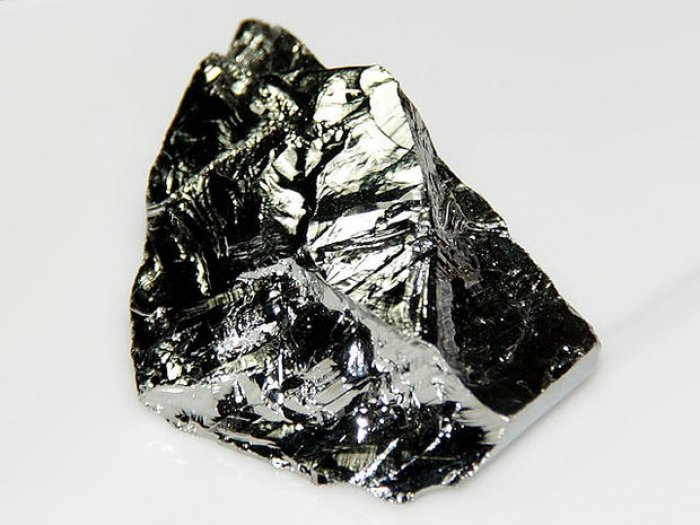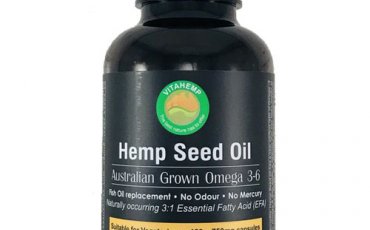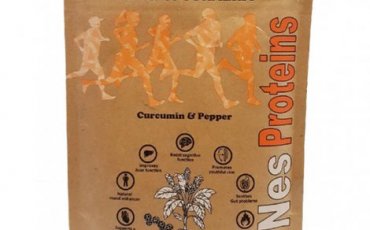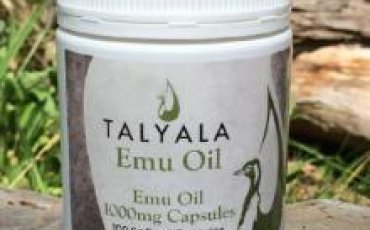Oxygen-Nutrition for Super Health (Germanium GE132)

Oxygen-Nutrition for Super Health
Research Breakthrough on an Oxygen Catalyst Stephen A. Levine, Ph.D.1 and Parris M. Kidd, Ph.D.2
We wish to introduce an exciting new Orthomolecular concept — Oxygen-Nutrition for Super Health. It's becoming clear from research findings in oxygen biochemistry, that correct tissue oxygenation and in addition a correct food/oxygen mixture is absolutely required for optimal health. Breathing provides the spark for life; nutrition keeps the fire burning. In our everyday activity, in exercising and endurance training, and in response to life's stresses, oxygenation of our tissues is often the factor which most limits our performance. We suggest that for optimal health, the individual needs to consider not only optimizing nutrition but optimizing oxygenation in order to optimally utilize one's foods.
Oxygen and Human Survival
Oxygen is the single substance upon which our life is most dependent. Without oxygen we survive for 4-5 minutes at most. The paramount importance of oxygen for human health is well- illustrated by the findings that, of all the parameters associated with long life, respiratory capacity is the number one parameter, rating over cigarette smoking and blood cholesterol levels (1).
To better illustrate the function which oxygen has in the human body, we might make a limited analogy between our living metabolism and the engine of an automobile. Both require finely tuned car-buretion (fuel/oxygen mixing) for smooth "burn" and maximum power. In modern technological societies we tend to indulge ourselves with an over-rich fuel mixture: too much fuel, too little oxygen. Due to lack of information, poor understanding,
1.Allergy Research Group
P. O. Box 489 San Leandro, CA 94577 2. Biomedical consultant
2036 Rosedale Ave., Oakland CA 94601
or lack of motivation, many of us do not exercise sufficiently to get enough oxygen. Adequate cellular and tissue oxygenation is essential for us to efficiently extract energy from our foods and to "air out" our body tissues. The latter process is essential for health, due to the tendency of acidic byproducts resulting from Suboptimal ox- ygenation (such as lactic acid) to accumulate in poorly-oxygenated tissues. These byproducts are familiar as the predominant cause of muscle cramps during exercise by the overtired or underfit.
Oxygen, Life Stressors, and Cancer
Not only is oxygen necessary for using our foods efficiently, but the consumption of certain foods actually tends to deplete our oxygen supplies. Many of the highly toxic environmental pollutant chemicals such as pesticides, herbicides, solvents, and diverse other petroleum byproducts are largely fat-soluble and come to reside in our high-fat tissues (2). As we consume a high-fat meal, we're very likely also consuming high amounts of environmental toxins. Whether obtained through direct exposure (occupational, household, happenstance), or through contaminated foods, these toxins are invariably peroxidative, consuming oxygen as they attack our cellular membranes (3,4). Their presence in our bodies also requires that we utilize oxygen in our attempts to detoxify them via the "P450" Enzyme System (4).
The Oxygen-Nutrition concept emphasizes lifestyle factors as they affect oxygen utilization. A diverse variety of stressful life occurrences, whether they be toxic chemical exposures, exposures to infectious agents, excessive emotional stress, overexercise, or physical injury, result in free radical generation in our tissues, concomitant with local depletion of oxygen from free radical-initiated lipid peroxidation (3). A free radical is a highly reactive
145
Journal of Orthomolecular Medicine Vol. 1, No. 3
Poor Oxygen-Nutrition may underlie the current epidemic of Candida (fungal yeast) overgrowth in our society, a condition which requires impaired immune defense. As many as 30 percent of Americans may be affected. Dr. Orian Truss has suggested that Candida overgrowth develops during stressful periods or as a result of other life events which lower our immune potential (8). Candida is commonly associated with food and chemical hypersensitivities, as well as with many other common illnesses. Candida overgrowth can underlie common gastro-intestinal and genito- urinary tract conditions such as indigestion, heartburn, bloating, cystitis, anal itching, vaginitis, asthma, hives, acne, hay fever, bronchitis, earaches and mental and emotional problems including headache, extreme irritability, confusion, depression, memory lapses, and lethargy. Immune phagocytic activity appears to be the major factor in limiting the spread of infection by opportunistic fungi such as Candida (9). It is believed that the process of attachment of the fungal hyphae to host cells activates the oxidative metabolism of the phagocytes, setting their lethal "respiratory burst" into motion. This "respiratory burst" is a surge in oxygen consumption by the cells, which then use the extra oxygen to generate free radicals aimed at destroying unwelcome pathogens. Cell- mediated immunity therefore depends critically on having sufficient oxygen in our blood and hard tissues.
Oxygen Fine-Tuning by Germanium
In relationship to cellular oxygenation the element germanium appears to play a (newly- discovered) critical role. Germanium (Ge), atomic number 32, atomic weight 72.6, tends to form a lattice-like structure and is a superb electron conductor (semiconductor). Whereas in the '50s and '60s it had become generally accepted that germanium had little biological sig- nificance, more recently Ge has attained new prominence from research and clinical findings centered around the work of Asai and summarized in his book "Miracle Cure: Organic Germanium" (10). Concentrations of Ge in foods and other
molecular fragment which poses a destructive threat to biological molecules. If the stressor source cannot be reduced, it is likely that peroxidative processes will eventually bring on abnormal lowering of tissue oxygen (hypoxia) which then predisposes the affected person to any of the degenerative illnesses so prevalent in civ- ilized countries today (7).
Cancer, possibly the most feared disease today, may develop in an environment of oxygen starvation (5). Cancer cells seem to thrive in hypoxic environments. Indeed, we find from the cancer literature that cancer cells have effectively lost the ability to utilize oxygen (6). They've ap- parently reverted to a form of ancestral existence which doesn't require oxygen, much resembling anerobic metabolism (glycolysis). Such metabolic characteristics would fit them well to survive and proliferate in low-oxygen environments. This we believe reflects the ultimate stage of cellular degeneration attributable to "low-oxygen lifestyle".
Oxygen, Immune Function, and Candida Overgrowth
One major life stressor is infection. Our immune system protects us against infectious agents ("pathogens") such as viruses, bacteria, and fungi. The immune system requires adequate supplies of oxygen, since the immune "bug destroyers" (the phagocyte cells) use oxygen to produce free radical products which help them to sense, intercept, attack, and kill pathogens (7). The paradox for our phagocyte "security force" is that these very cells are themselves vulnerable to damage from their own free radical products. Phagocytes must therefore have adequate supplies of oxygen, as well as particularly powerful antioxidant protection. Even those immune cells which are not capable of phagocytosis, such as the T lymphocytes which kill cancer cells, also appear to rely on oxygen free radicals. Selective oxygen-free radical production to kill "non-self cells, concomitant with optimal antioxidant status to defend the self cells is, we believe, the fundamental basis of "cell-mediated" immunity. Hence our critical dependence on optimal Oxygen-Nutrition for optimizing our resistance to disease.
146
Oxygen-Nutrition for Super Health
biomaterials mostly range from 0.1 to 1.0 ppm; hence one might expect to find from 0.1 to 1.0 micrograms of germanium per gram of food material. However, the amounts of germanium in medicinal plants were reported by Asai to attain Ge levels as high as 2000 ppm. Shelf fungus, for long regarded as an effective treatment for can- cer, currently tops the list at 800-2000 ppm. Garlic was measured at 754 ppm, and aloe and chlorella at more than 70 ppm (11). Since this report by the late Dr. Asai first appeared, there has been a surge of interest in the possible nutritional and pharmacological importance of germanium.
Acute and chronic toxicity studies conducted by Asai have indicated that germanium is essentially nontoxic (10,18). Additional studies utilized "Ge-132" (car-boxyethyl germanium sesquioxide/Or-ganic Germanium), originally synthesized by the Asai Germanium Research Institute in Tokyo, Japan.* Organic Germa- nium/Ge-132 was shown to have extremely low toxicity in test animals, up to an equivalent in humans of many grams per day.
The clinical trials at Dr. Asai's Germanium clinic produced results that were impressive, even though they were not controlled studies. Numerous case histories, along with standard blood chemistry parameters, were taken of patients with a broadranging spectrum of symptomatologies (12). Under medical supervision at the Organic Germanium Clinic in Japan, hepatic dysfunctions, hepatitis, and various cancers including leukemias were just a few of the serious diseases that responded well to Organic Germanium at doses ranging from 50 to 1000 mg per day. Diseases of the eye, including cataracts, often responded quickly and dramatically. Organic Ge produced excellent results when used on hypertensive patients, and was surprisingly effective at modulating blood pressure in SHR (spontaneously hypertensive) rats. Patients with myocardial infarction, angina pectoris and Raynaud's disease responded well to dosages as high as 1400 mg per day. Astonishing benefits were reported against mercury, cadmium, and other metal poisons (10).
*Available for research from BIOCUR- RENTS,' tel. (415) 639-4575.
Organic Germanium Stimulates Immunity
Organic Ge is a dramatic immunosti-mulant. In controlled studies it has demonstrated marked anti-tumor effects and interferon-inducing activity, and restored immune function in immune-depressed, aged mice (13). These immunostimulating effects were achieved with oral dosages, and no harmful side effects were noted. Also, there are reports describing its en- hancement of natural killer cell activity in healthy human subjects (14). Studies on immune- suppressed animals and on patients with malignancies or rheumatoid arthritis suggested that Organic Ge normalized the function of T cells, B lymphocytes, antibody-dependent cellular cytotoxicity, natural killer cell activity and numbers of antibody-forming cells (13). Anti-tumor effects from Ge-132 were reported in mice with Lewis lung carcinoma, chemically- induced sarcoma, and leukemias (16). Evidently Organic Germanium has a profoundly positive influence on the immune system (15).
Germanium also reportedly has analgesic properties. The painkilling effect of Asai's Organic Germanium were first recognized during its early clinical use and confirmed from further studies. Taken orally or by intravenous injection, it clearly enhanced morphine-induced analgesia. It was suggested that Organic Ge may activate dopaminergic or serotoninergic neurons in analgesic pathways and/or trigger release of endogenous enkephalins or endorphins (17).
Conclusion: Oxygen-Nutrition and Germanium
The apparent versatility of Organic Germanium in normalizing health and alleviating major human diseases and dysfunctions suggests that it acts at a fundamental level of life function. The known biological and clinical effects of Organic Germanium are consistent with Dr. Asai's suggestion that it can (at least partially) substitute for or supplement oxygenation in our tissues. It could facilitate energy generation from high-energy electrons, akin to the well- understpod role of oxygen
147
Journal of Orthomolecular Medicine Vol. 1, No. 3
as an "electron sink" essential for energy- yielding electron transfer processes. In those cells which cannot utilize oxygen, i.e. cancer cells which actually are oxygen-sensitive we might predict that its presence as an "oxygen- catalyst" could have therapeutic consequences.
The discovery of the biologic value of germanium sesquioxide, Asai's "organic germanium compound" is a landmark de- velopment in the field of nutritional medicine. This breakthrough stems from Asai's initial finding that Ge occurs in such high concentrations in medicinal plants. It appears that Asai has identified one of the main active principles accounting for the therapeutic action of many old-age remedies. The late Dr. Asai did not regard germanium as a drug. He stated "I would rather call it a health-giving substance — it restores health to those afflicted with disease, and sustains health in those who are healthy."
Bibliography
- Cullen, K. et al.: Multiple regression analysis of risk factors for cardiovascular disease and cancer mortality in Busselton, Western Australia — 13 year study. J. Chron. Dis. 36:371-377, 1983.
- Laseter, J. L., DeLeon, I. R., Rea, W. J. and Butler, J. R.: Chlorinated hydrocarbon pesticides in environmentally sensitive patients. Clin. Ecol. 2, 3-12, 1983.
- Levine, S. and Kidd, P.: Antioxidant Adaptation: Its Role in Free Radical Pathology. Biocurrents Division, Allergy Research Group, 400 Preda St., San Leandro, CA 94577, 1985.
- Ibid:Chapter7.
- Levine, S. and Kidd, P.: Beyond antioxidant adaptation: a free radical-hypoxia-clonal thesis of cancer causation. J. Orthomol. Psychiatry. 14(3): 189-213, 1985.
- Oberley, L. W.: Superoxide dismutase and cancer.
In: Superoxide Dismutase (V ol II), 127-166 (Chapter 6). Ed. by L. W. Oberley. Boca Raton, Florida: CRC Press, 1982.
- Levine, S. and Kidd, P. Antioxidant Adaptation, Chap. 5, 1985.
- Truss,O.C:Metabolicabnormalitiesinpatients
with chronic candidiasis: the acetal-dehydeypothesis. J. of Orthomolecular Psychiatry, Vol. 13, No. 2,
1984.
9. Levine, S. A.: Candida albicans and oxygen-free radical processes. International Journal of Holistic Health, Fall, 1985.
- Asai, K.: Miracle Cure: Organic Germanium. New York: Kodansha International Harper & Row, 1980.
- Ibid. p. 22; Asai, K., 1973. Shoku No Ka-gaku, 12:81 (in Japanese); but see also Mino et al, 1980. Determination of germanium in medicinal plants by atomic absorption spectrometry with electrothermal atomi-zation. Jap. Pharm. Bull. 28:2687-2691.
- Asai,K.:MiracleCure,pp.99-131.
- Mizushima, Y. et al.: Restoration of impaired immunoresponse by germanium in mice. Int. Archs. Allergy Appl. Immun. 63:338-339,1980; Suzuki, F. and Pollard R. B., 1984. Prevention of suppressed gamma-interferon production in thermally injured mice by administration of a novel organo-germanium compound, Ge-132. J. of Interferon Research, 4:223-233; Aso H., et. al., 1985. Induction of interferon and activation of NK cells and macrophages in mice by oral administrations of Ge-132, an organic germanium compound. Microbiol. Immunol. 29(l):65-74.
- Yoshida, M. and Arimori, S.: Effects of Ge-132 in vitro on the activity of human natural killer cells. Med. Biol. 104:87-89 (in Japanese), 1982; Arimori S., et. al., 1981. In: Immunomodulation by Microbial Products and Related Synthetic Compounds. Y. Yamamura et al. (eds.) Elsevier Science Publishing: Amsterdam, Holland, pp. 498-500.
- Asai Germanium Res. Inst., 1984. Ge-132 outline. (Unpublished)
- Kumano, N. et al.: Antitumor effect of the organogermanium compound Ge-132 on the Lewis Lung Carcinoma (3LL) in C57BL/ 6(B6) mice. Tohoku J. Exp. Med., 146:97-104, 1985.
- Hachisu, M. et al.: Analgesic effect of novel organogermanium compound, Ge-132. J. Pharm. Dyn. 6:814-820, 1983.
- Aso, H. et al.: Microbiol. Immunol. 29(1):65-74, 1985.
148




